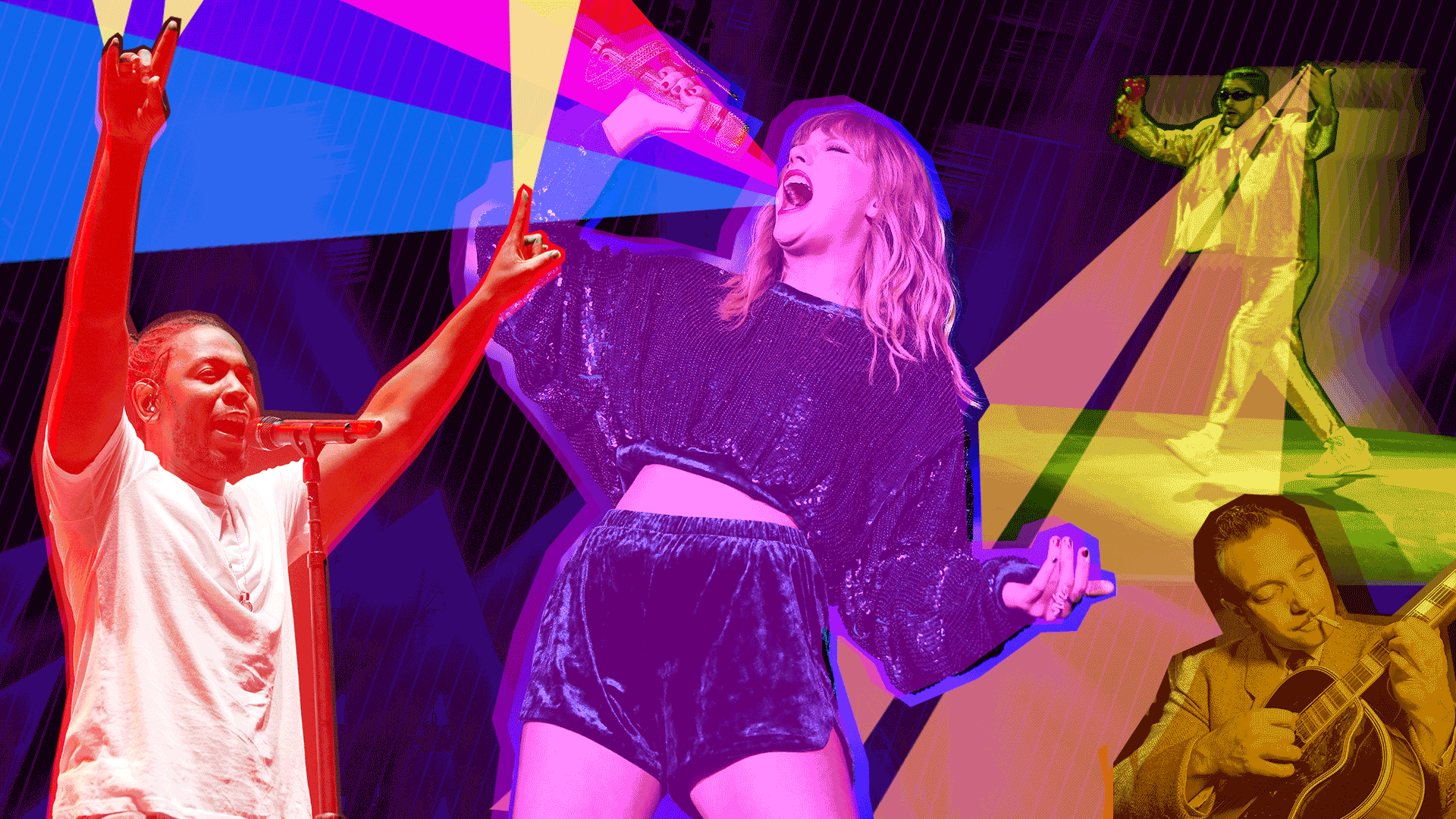- February 15, 2024
- By Sala Levin ’10
Taylor Swift’s reputation as a fearless defender of her fans got a jolt when an anti-hero emerged on the Philadelphia leg of her Eras Tour last May: a security guard who she thought was being mean to a front-row concertgoer.
During the hook of “Bad Blood,” Swift suddenly narrowed her eyes, pointed out into the crowd and said, “She’s fine!,” then: “’Cause, baby, now we got bad blood—She wasn’t doing anything!—You know it used to be mad love—Hey, stop!—So take a look what you’ve done, ’Cause, baby, now we got bad blood, hey!—stop!”
Clips of the incident went viral. “Imagine Taylor yelling FOR YOU,” commented one TikTok user, adding a blushing smiley face emoji. “Singing and yelling at the security to stop harassing her fans, simultaneously, is next level talent,” said another. “The hey….stop and walk away was the very best mom moment ever,” added a third.
The relationship between the star and her Swifties is one of the topics discussed in “FIRE Music & Social Identity,” a research group (or “stream”) that’s part of the University of Maryland’s First-Year Innovation & Research Experience (FIRE), an undergraduate program that has students take on collaborative research projects. The research stream explores music from various ethnic, national, political, and cultural backgrounds—and how these different styles relate to social trends of the times in which their creators were living.
This research will “help us start to see how people perceive certain genres,” said Elizabeth Massey, the assistant clinical professor who leads FIRE Music & Social Identity. “It’s not just about the artist’s perspective, but also what listeners are doing. Listeners are navigating the choices they have.”
The Swift example illuminated several themes: the gender dynamics at play when a female artist stands up for her fans; the technical skill required to alternate between singing lyrics and making declarations; the interplay between the message of a song called “Bad Blood” and a scuffle taking place in real life.
“It’s not just the sonic things that are happening at a musical event—it’s that combined with real events that make this really pivotal moment,” said Massey.
Over the course of the semester, students will learn about jazz manouche (also known pejoratively as gypsy jazz), the percussive style of strings-based jazz popularized by the late Belgian-French Romani musician Django Reinhardt. A discussion of reggaeton will highlight Puerto Rico-born artist Bad Bunny, and especially his song “El Apagón,” (“The Blackout”), which addresses the poor living conditions of many of the island’s native people. Its 23-minute music video includes documentary elements and “lays out the evidence for how the United States’ mainland citizens are able to really exploit economically the people of Puerto Rico,” said Massey.
Students are drawn to this research for its relevance to their lives, they said. “I just wanted something that I felt a natural connection with,” said Tolulope Ajenifuja ’25. “I’ve always loved music and been musically inclined, and social identity is something that I’ve thought a lot about since quarantine.”
Hayden Polsky ’27, a dual major in government and politics and theatre, said the course “had a good combination of everything I was doing while introducing new things for me to learn.”
